Stocks finished lower, with the S&P 500 down about 60 bps, led mostly by mega-cap tech and Apple (NASDAQ:AAPL).
Specifically, it was downgraded by Barclays yesterday, noting sluggish iPhone sales in China. It is no surprise there for multiple reasons.
Nike (NYSE:NKE) reported horrible China results a few weeks back, and there have been rumors of bans on iPhone sales in China for some time.
But it did not matter heading into year-end because it was all about getting every last drop of performance out of the stock market.
The volatility sellers were clearly in control those final weeks, and for the most part, the trade wouldn’t work unless Apple and the other big 7 seven names weren’t involved.
The implied volatility dispersion trade was on full display in the year’s final weeks, with the 1-month implied volatility of the Mag 7 50 delta IVs climbing while the S&P 500 IV fell. 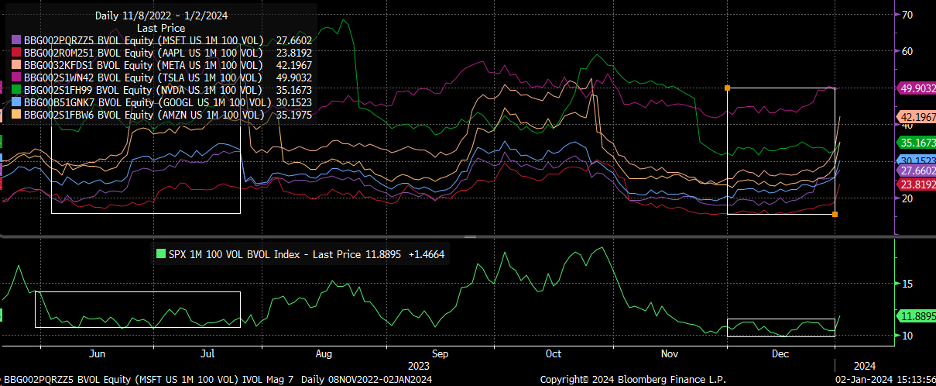
Meanwhile, the 1-month implied correlation index was falling, indicating that the S&P 500 and the top 50 stocks in the index were seeing IV moving in opposite directions.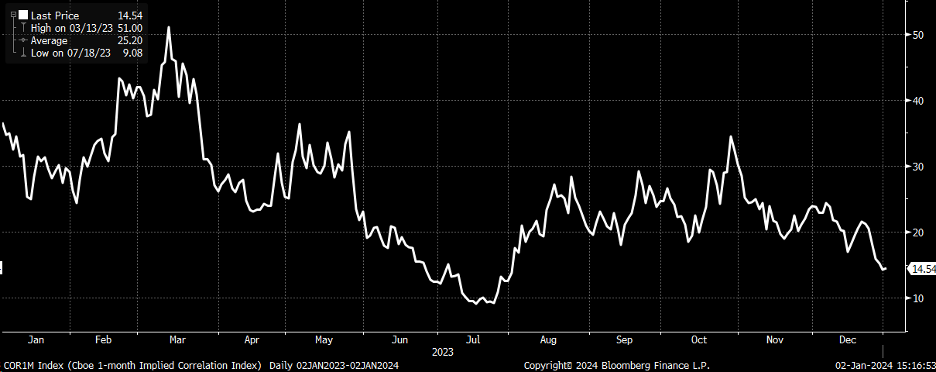
Yesterday’s carnage in the market was saved at the last minute with a massive $7.4 billion buy imbalance, which sent the market ripping higher in the final 10 minutes of trading.
Throughout most of the day, the activity, from several vantage points, looked like parts of the market are unwinding the end of the 2023 rally, and the data this week will largely determine if that trend accelerates.
This could have merely been due to some kind of start-of-year inflow.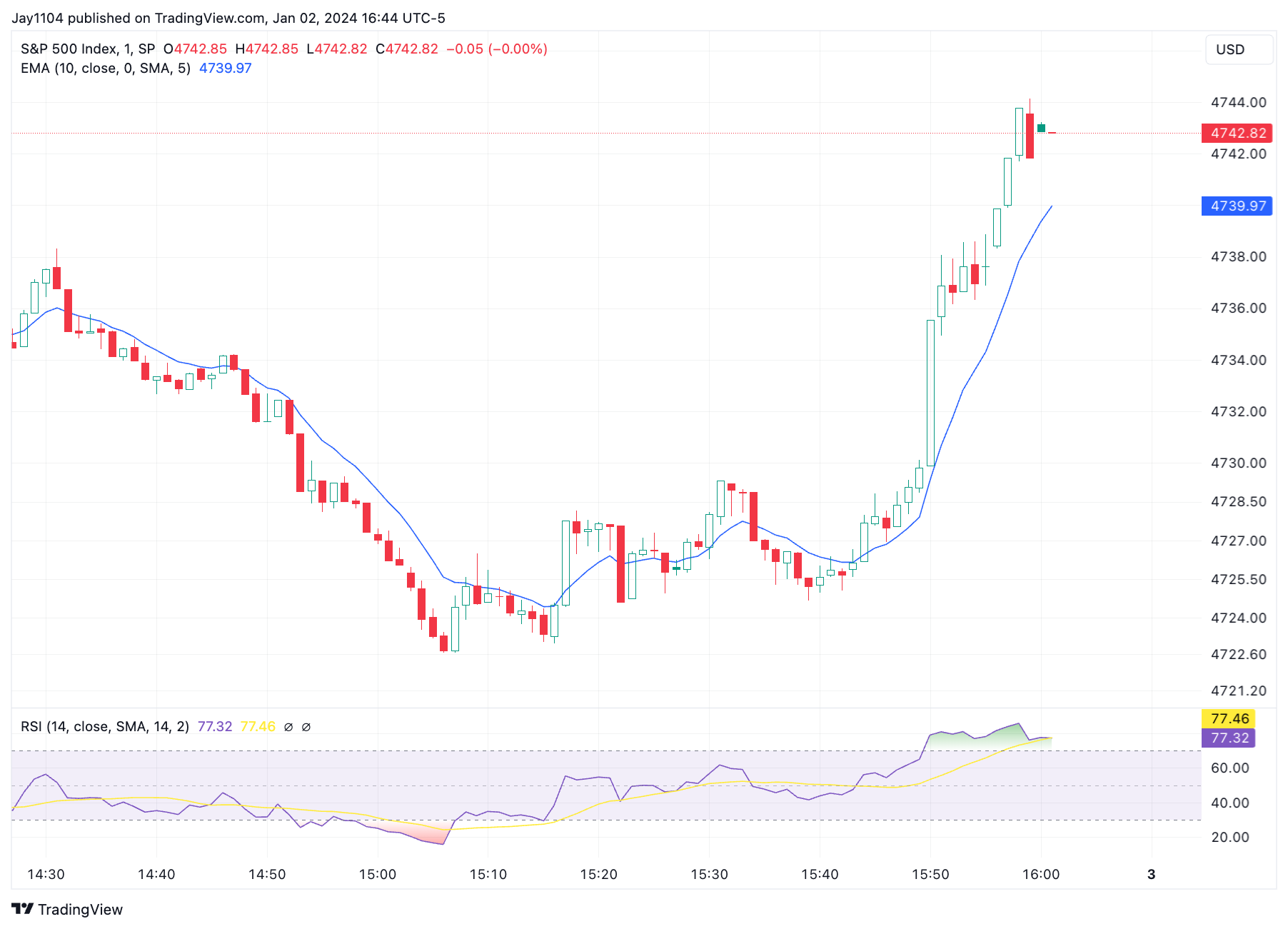
The S&P 500 fell below 4750 yesterday, the zero gamma level, and below the 10-day Exponential moving average.
So, the move into negative could surely increase volatility if it persists, meaning the move below the 10-day EMA could indicate a change in trend is forming.
Additionally, as of last week’s close, we have broken the rising wedge pattern.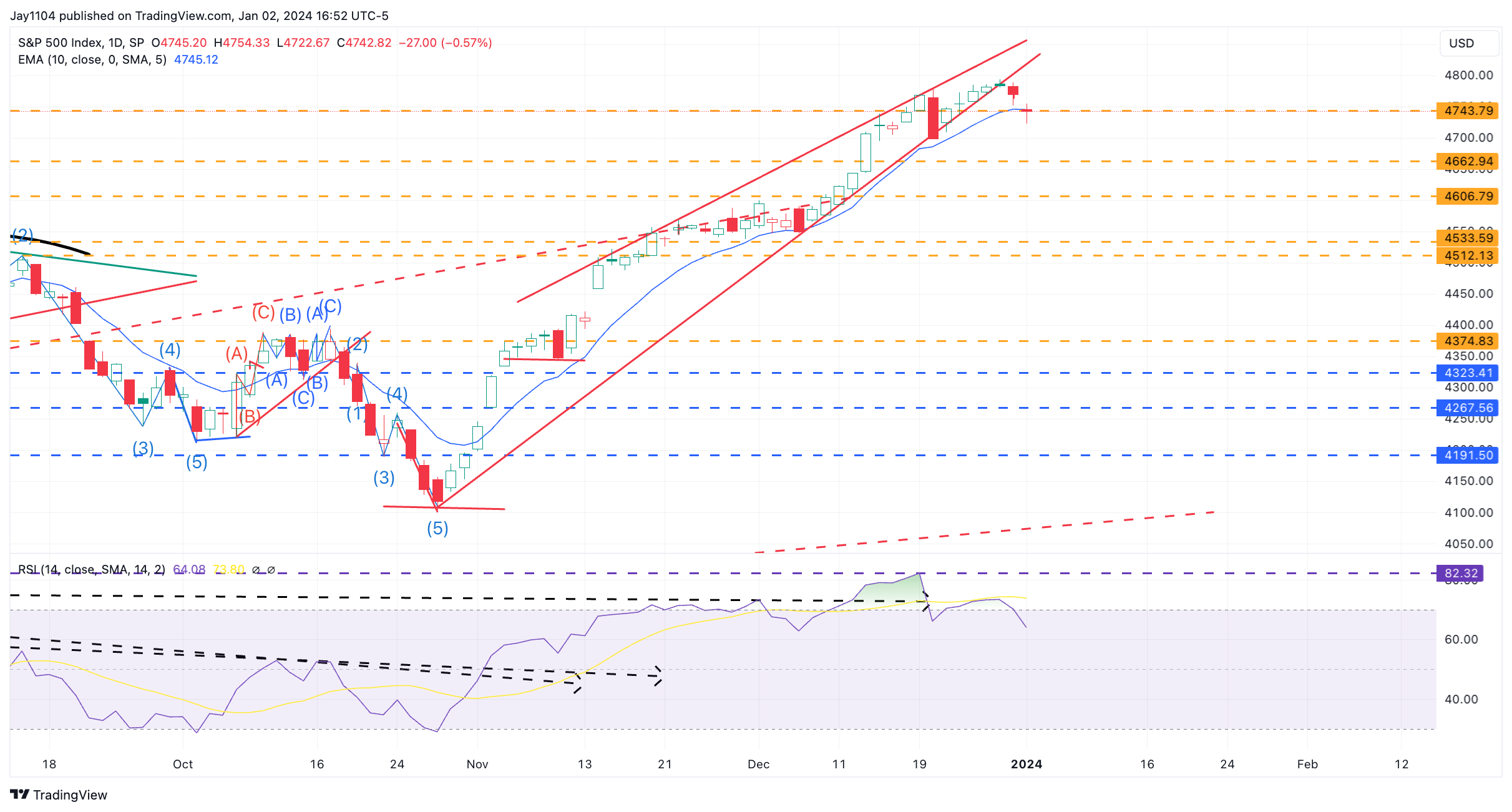
If the data this week pushes the dollar and rates higher, then yes, I think the sell-off in the equity will intensify.
Because once again, the “market” has overreached on its rate cuts narrative.
The massive easing of financial conditions could easily be a stimulative force to the economy and result in better-than-expected data points to come across the board this week. 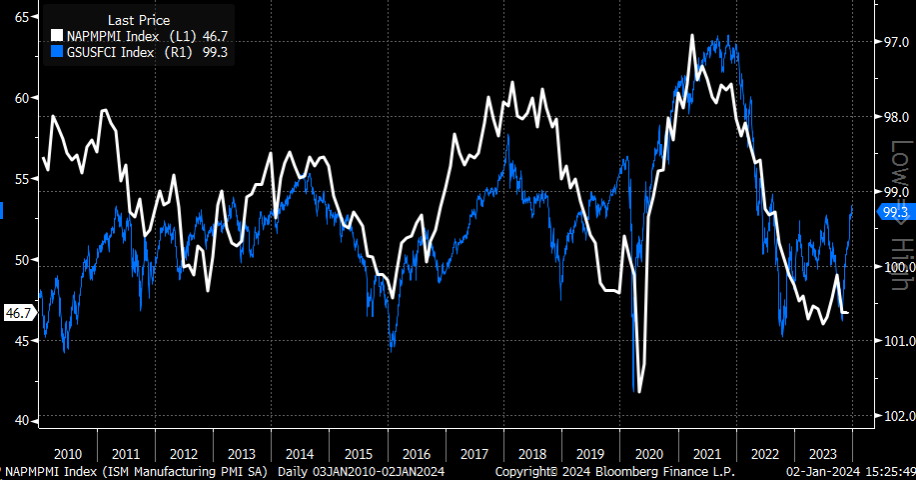
The 10-year rate certainly increased yesterday, climbing above its 10-day EMA and testing its long-term downtrend.
Better data today from the JOLTS or ISM could lead to a move up in the 10-year that pushes the rate above the downtrend while also reversing the downward momentum in the RSI.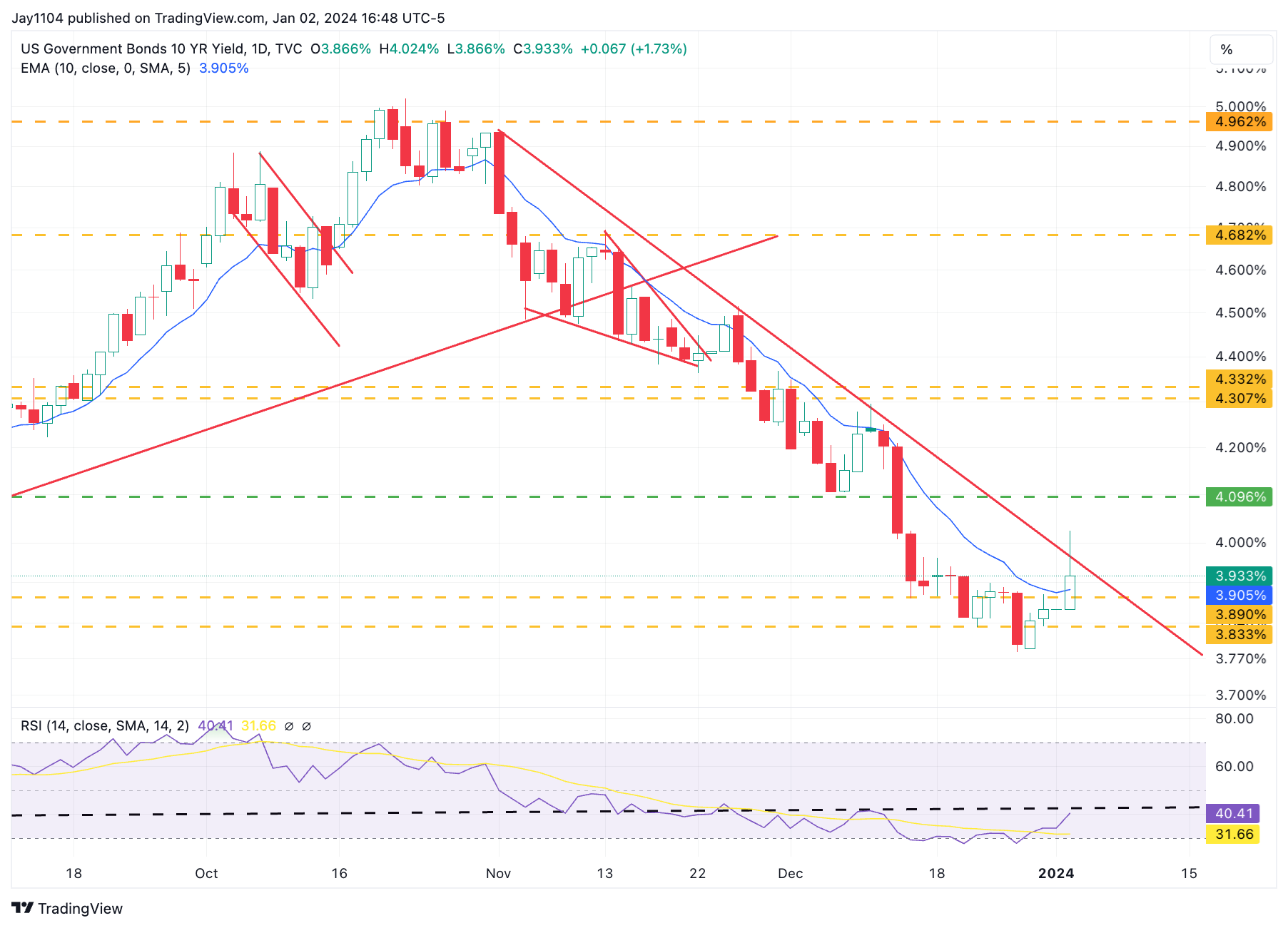
Nvidia Down Almost 3%
It isn’t just Apple that struggled yesterday, with Nvidia (NASDAQ:NVDA) trading down almost 3%. This is now the third time the stock has tested the $500 price range and the third time it has been rejected.
More immediately appears to be a double top pattern, with the neckline around $455, while a bigger triple top is potentially forming with a neckline around $405. A break of $455 sets up a test of $405, and a break of $405 sets up a test of a gap fill at $305.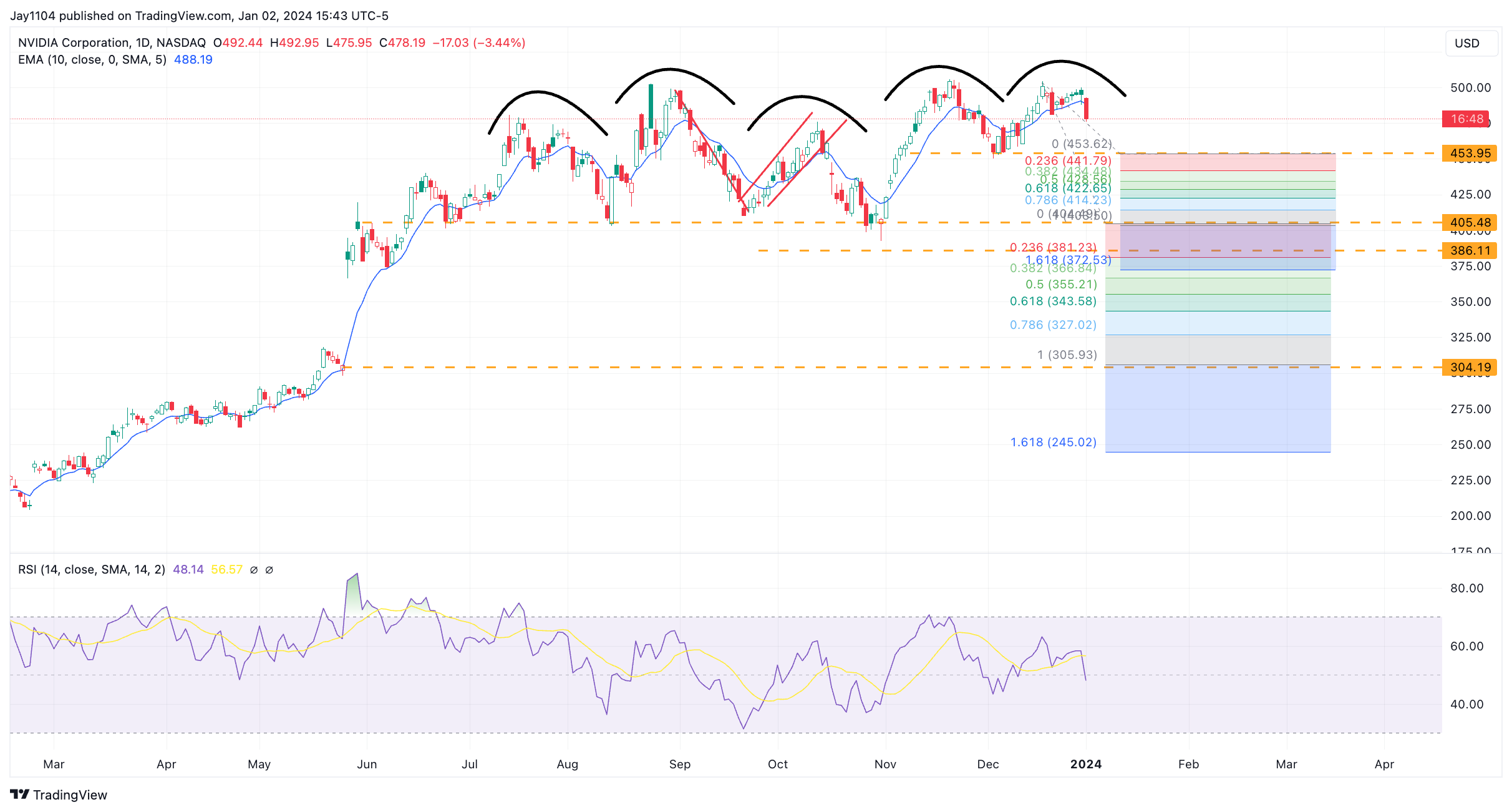
Check Out My Latest YouTube Video:
Have a good one.
